by Maxime Ollivier
A tale of artistic trip for democracy
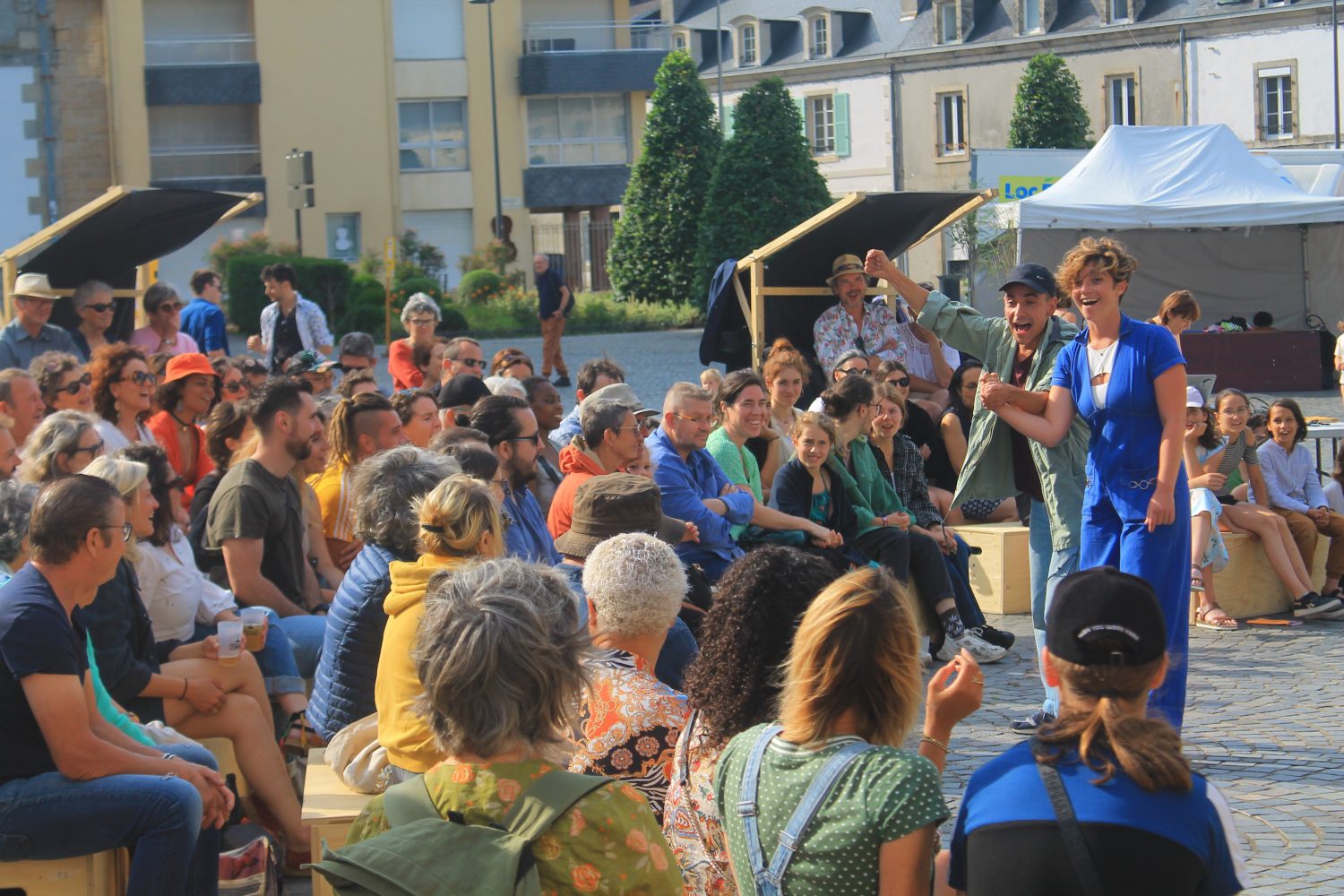
And every time the last scene begins, I’m freaking out, thinking “Will it take?”, “Will people stay for the rest?”: the mayor steps forward, announcing the opening of the public meeting to listen to citizens about the construction of this infamous shopping zone on the outskirts of the little village. The actors are seated in the audience. They take the audience along with them, defending the points of view of the inhabitants: the environmental activist, the trade unionist, the farmer, the property developer, and then the young heroine, the baker who realizes the limits of representative democracy – no spoiler here : you have to see the play to find out whether this shopping center is being built or not.
At the end of the play, the audience is delighted. Twist in the plot: I turn to the audience and say, “Now it’s your turn to speak”. At this point, we put on our activist hats, and we have a number of accomplices in the audience, all trained to lead collective intelligence sessions. We divide the audience into small groups to ensure a better distribution of the floor and allow everyone, even the youngest or shyest, to express themselves. We take people by surprise… But we’ve got it all worked out, and it works!
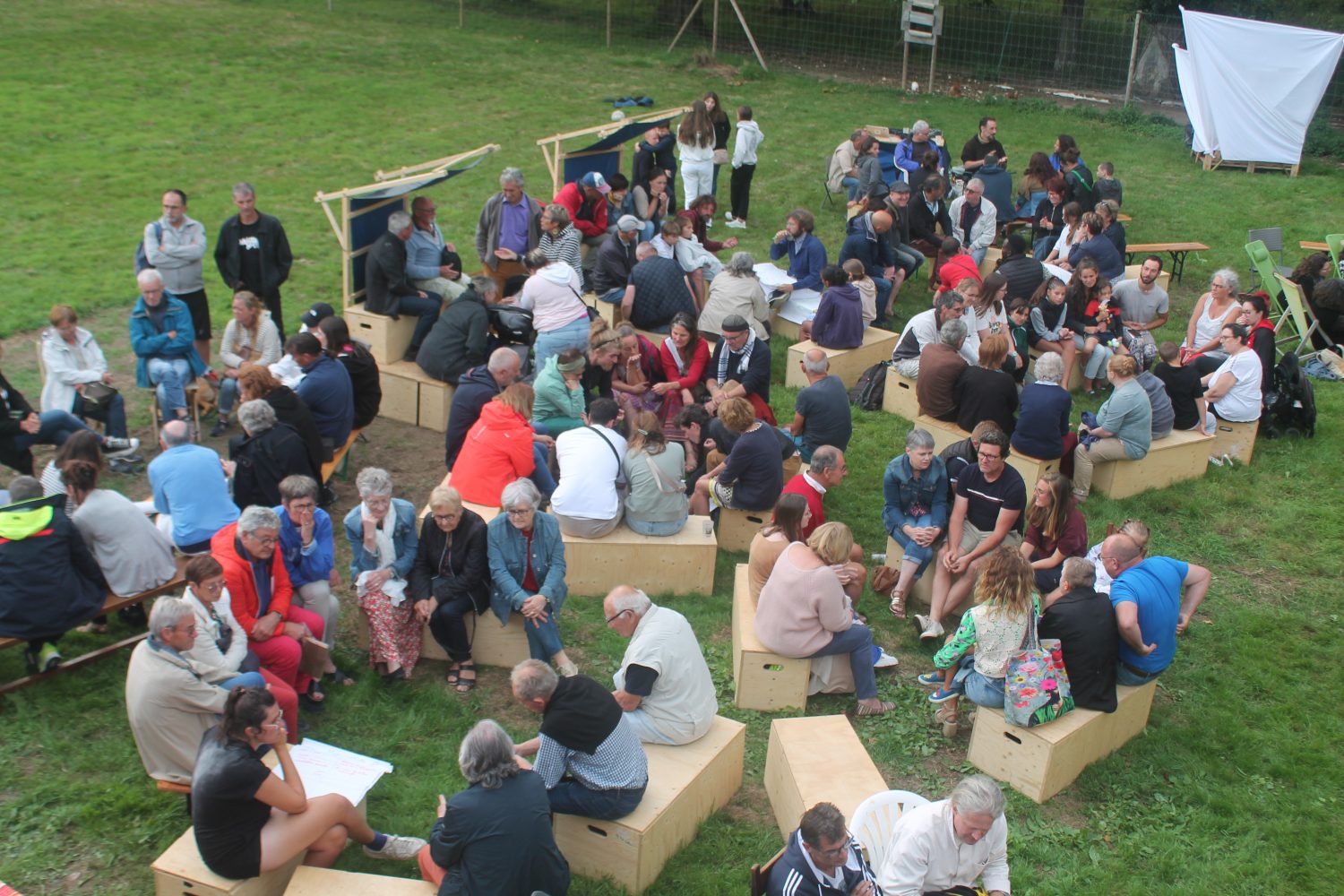
We ask them how they feel after the play, what emotions they feel, if they recognize themselves in a character, if this struggle echoes a situation they may be experiencing in their own city… We humbly try to create spaces to go beyond the spectator posture in which both theater and representative democracy place us. We’re trying it out here, on this public square in front of the town’s theater – and not inside, on purpose to reach out to a broader audience – with our wooden agora built for the occasion, which we move from town to town.
At the end of the exchange, we gathered everyone in a very large circle in the square, the largest we’ve done on the whole tour I think… unless it’s in Rennes? “Can you tell us how you feel after this experience?” I ask. “Enthusiastic, happy, motivated, invigorated, full of joy, empowered,…”. The words follow one another and we end up all shouting together in the same voice, just before the DJ of the evening starts the music. And the party’s on.
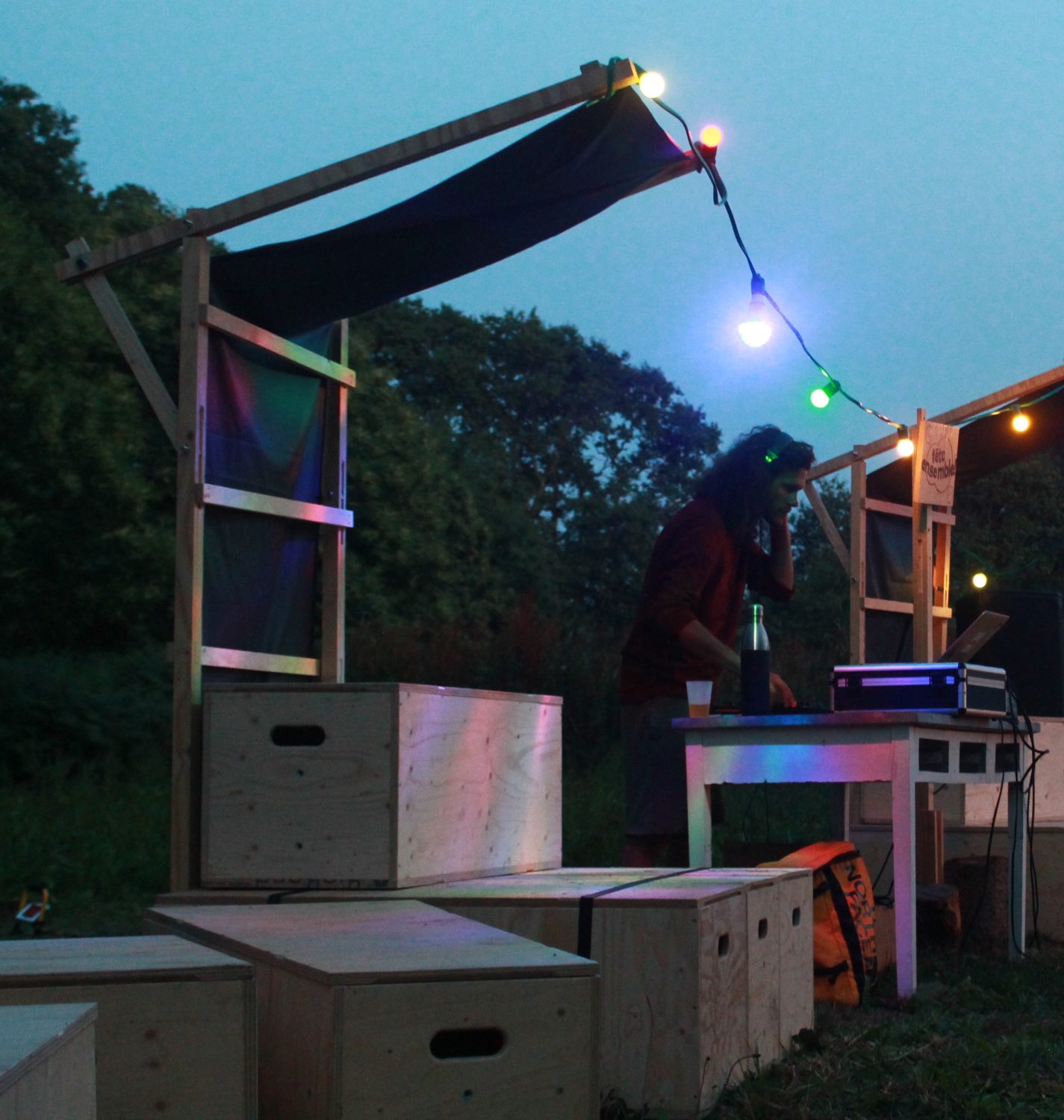
Artivism as a solution to the distance between young people and democracy
At Le Bruit Qui Court, the artivist collective I co-founded, we’re convinced that emotions are a vector for change. Young people are aware of the democratic situation in France, the record abstention rate, the lack of representativeness, the polarization of debate, the rise of the far right, and corruption. They know it all. So to give them hope, to show them that we can overcome our collective powerlessness, art is our tool. Combining theater, democracy and celebration to mobilize young people – that’s the challenge! We call it artivism, a way of acting on the ridge between art and activism.
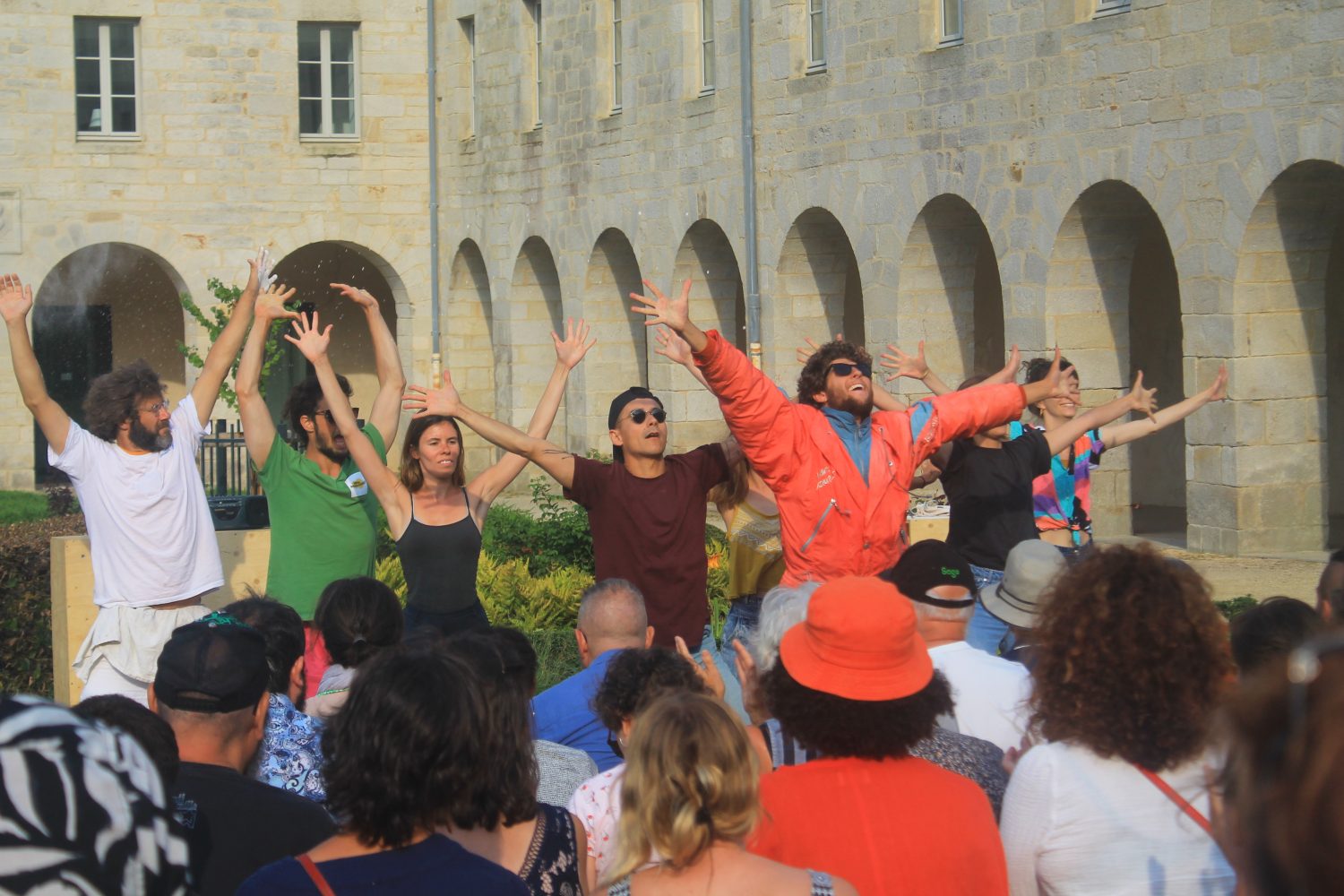
To recreate the link between young people and democracy, it seems important to me not to delegitimize ways of expressing oneself other than voting. In this respect, activism in the form of petitions, rallies, demonstrations or posters should be considered as much as voting as a way of expressing oneself. Young people have ideas and opinions. They don’t express it at the ballot box because they don’t feel represented, or because the way politicians address them is not the right way. But we participate in another way.
Furthermore, if the intention is to increase young people’s participation in institutionalized democratic spaces, we can work to recreate the link between young people, voting and representative democracy: members of the Le Bruit Qui Court collective built a “disco-voting booth” for the last European elections. The first obstacle to not voting is not knowing where your polling station is, and not anticipating the moment. Deploying this “disco-voting booth” in universities and in parties, and getting young people in to choose the next music to be played, is already a way of bringing young people closer to the ballot box and making sure that the idea of going out to vote is no longer something completely foreign to them.
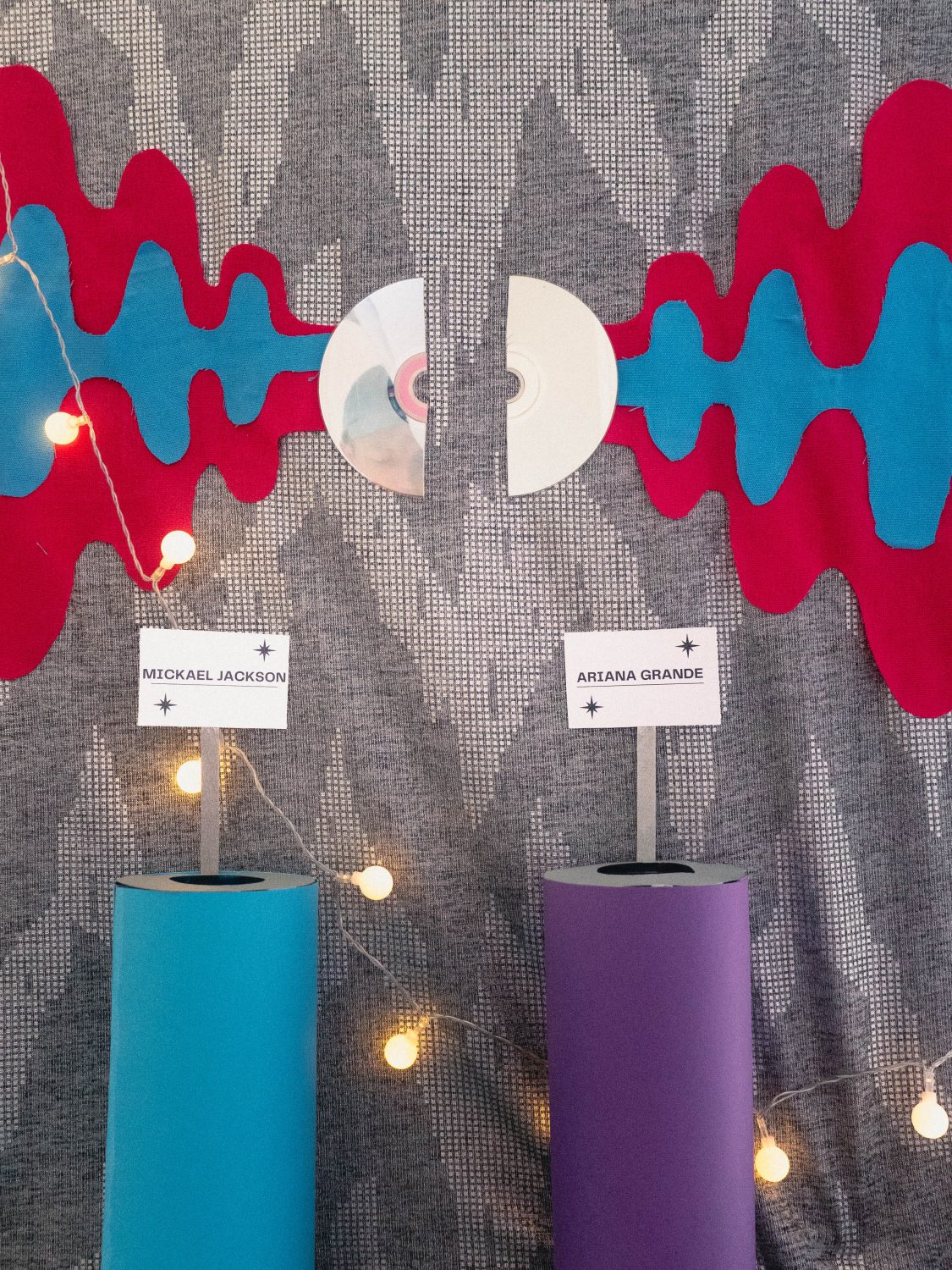
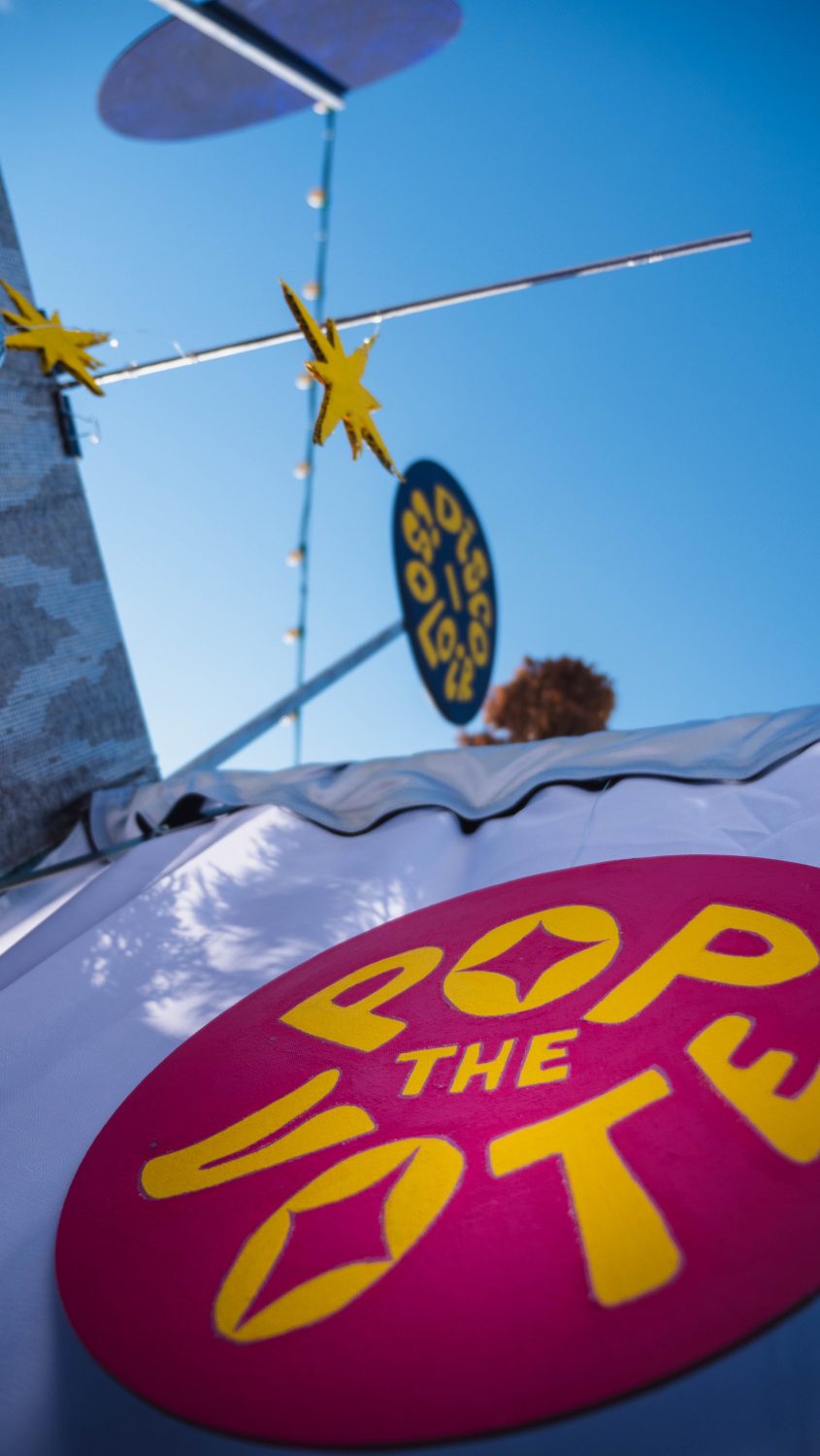
But in fact, we are taking a more radical view – one that gets to the root of the problems and doesn’t just try to deal with the consequences. We’re trying to get to the root of the dysfunction in our democratic system. The polarisation of society, amplified by the media and social networks, tends to give more weight to the most extreme opinions and to their confrontation. The national conversation is becoming a battleground. Paradoxically, while the media and social networks offer greater opportunities for encounters with otherness, the ability to disseminate messages and access information, the algorithms above all encourage filter bubbles and confirmation bias. Over and above the polarisation of public debate, the growing abstention rate bears witness to the population’s disinterest not in politics as we would have them believe, but in politics as it is practised today. The democratic crisis is a crisis of the forms of democracy.
The new forms of participatory and deliberative democracy are a response to the crisis of representative democracy. At the very least, they can complement it. And I don’t mean deliberative democracy, which only takes the form of institutionalised forums. I believe it is important to revive grassroots activism with a direct impact, as popular education has been doing for many years, and which is a useful tool for developing a culture of participatory and deliberative democracy. Creating spaces for healthy exchange and debate, which may be confrontational but in which disagreement is fruitful, is part of the solution to the current democratic crisis. Enabling young people to move beyond the filter bubbles of social networks and the idea that democracy comes down to voting. We need to increase the number of forms for participation and deliberation in order to change the culture of democracy, and continue to advocate that as many of these forums as possible should be linked to decision-making forms, so as not to create yet another consultation where people have the feeling that their opinions are being taken and then something else is decided!
How can we create such spaces by and for young people?
To raise awareness of fundamental issues, mobilise new types of audience and re-politicise a section of the population, particularly young people, we need innovative grassroots mobilisation events. To meet all these challenges, Le Bruit Qui Court experimented with artistic and political events during a summer cycling tour of Brittany. As far as possible, each of the events was preceded by a period of mobilisation towards the youth of the city in order to inform them of the event, and was followed by a period of training and workshops on democracy. Here’s how one of our events worked in practice:
- Using emotions to generate commitment: the play tells an accessible and popular story, with characters that young people can identify with. The play makes an explicit link between events directly linked to political issues and their daily and intimate consequences.
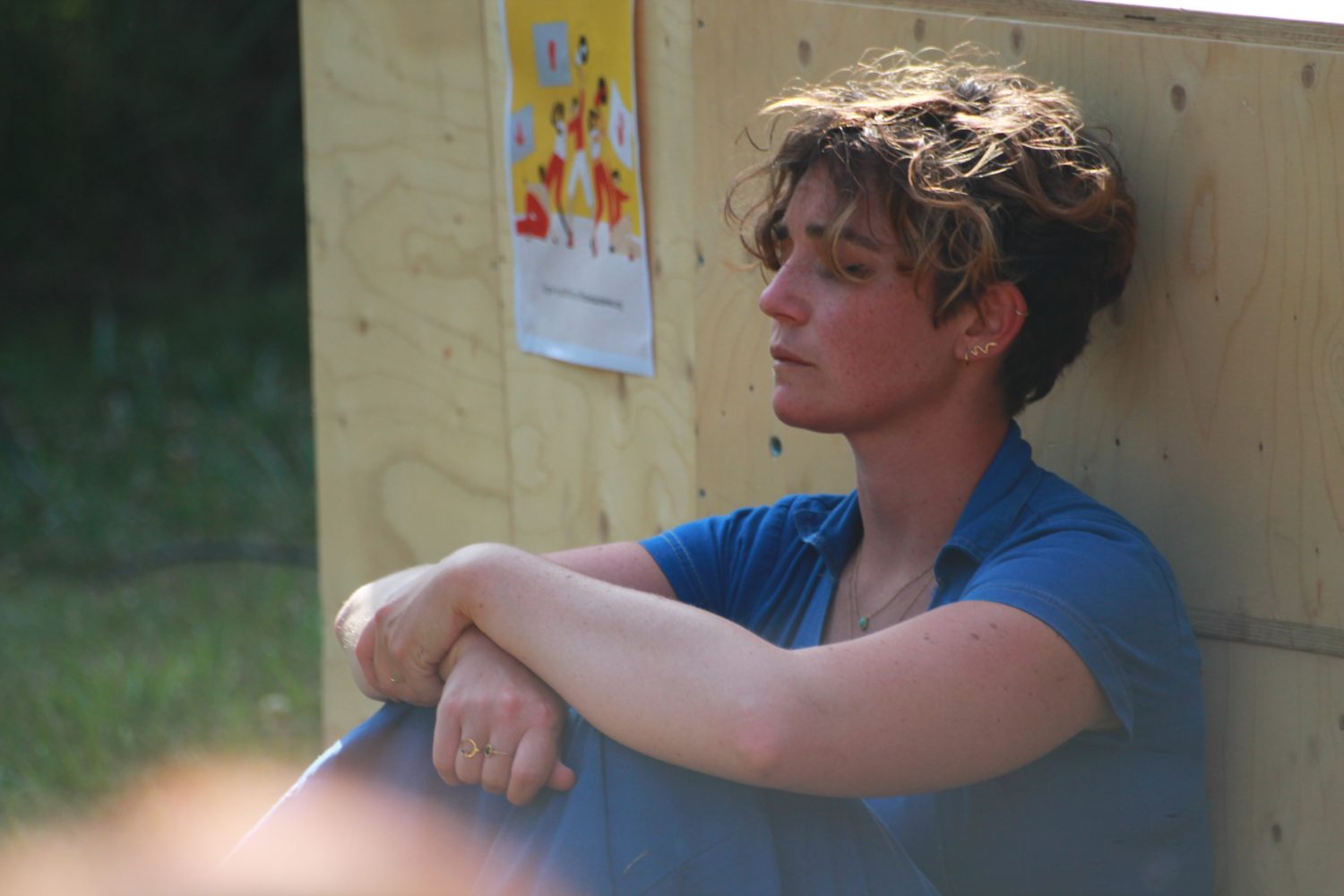
- Show off collective intelligence practices: the second moment blends into the play, it is a democratic space that takes the form of a popular assembly at the end of the play. Using collective intelligence practices, the aim is to provide an opportunity for people to exchange ideas and discover deliberative democracy, and to revitalise democracy at a local level. The aim is to fight the feeling of powerlessness by demonstrating that it is possible to do things differently together, to listen to each other and to have healthy debates. In short, democracy!
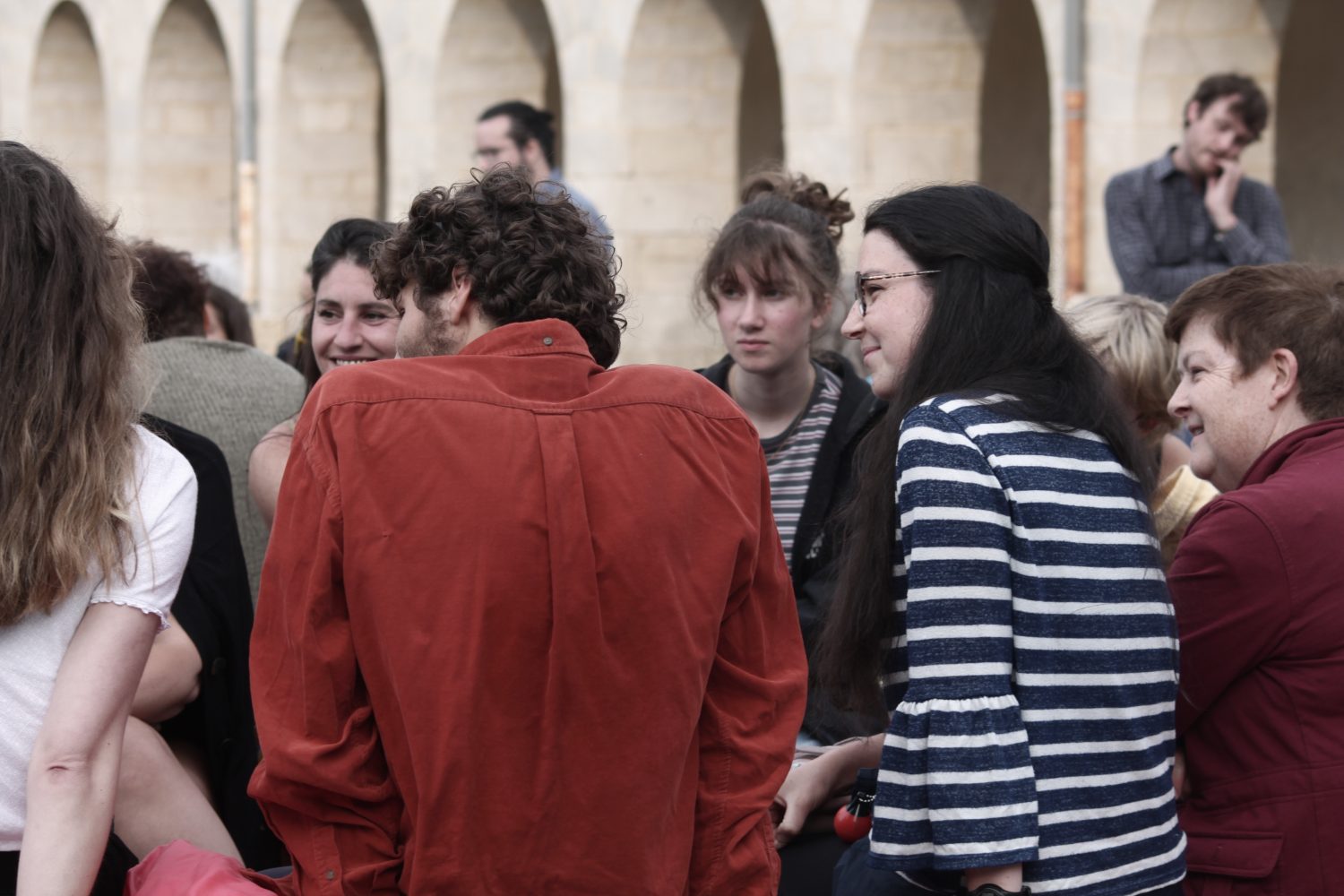
- Festivities as a way of combining democracy with a joyful experience: each event closes with a festive evening to spread a culture of engagement in which celebration and joy are paramount. Dance is a way of breaking down the last barriers between individuals and feeling part of a community, despite disagreements.
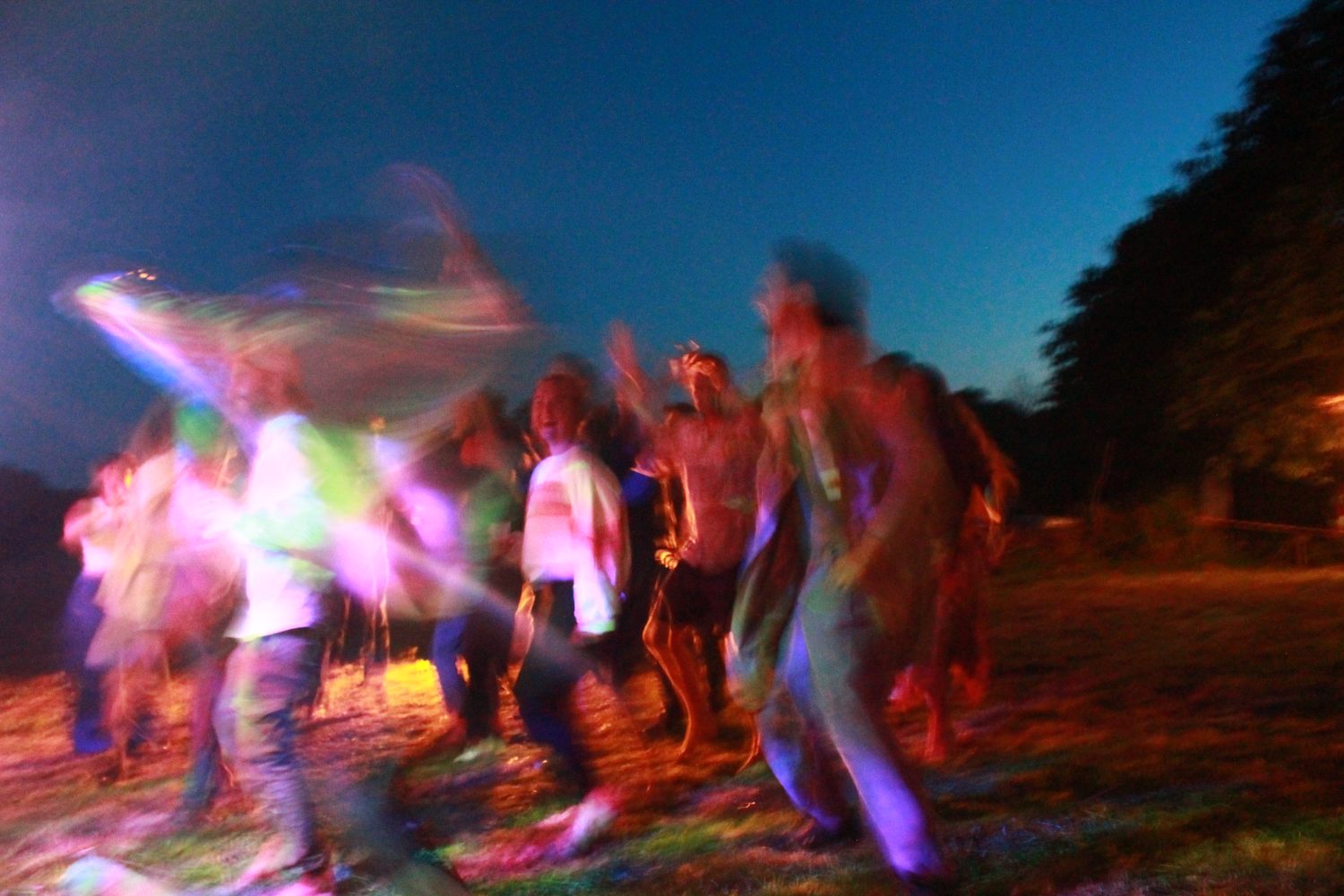
Creating new democratic visions
Organising such an event in the public space, paying attention to the scenography, with a beautiful wooden agora, paying attention to the accessibility of the space for all, associating these spaces of participative and deliberative democracy with conviviality, music and festivities, means changing the imaginary of democracy. It means ensuring that when the word ‘democracy’ is mentioned, it is images other than institutionalised spaces and large inaccessible buildings full of elected representatives in suits and ties that take root in the minds of young people, other spaces, other times, other forms of organisation, in which we can project ourselves.
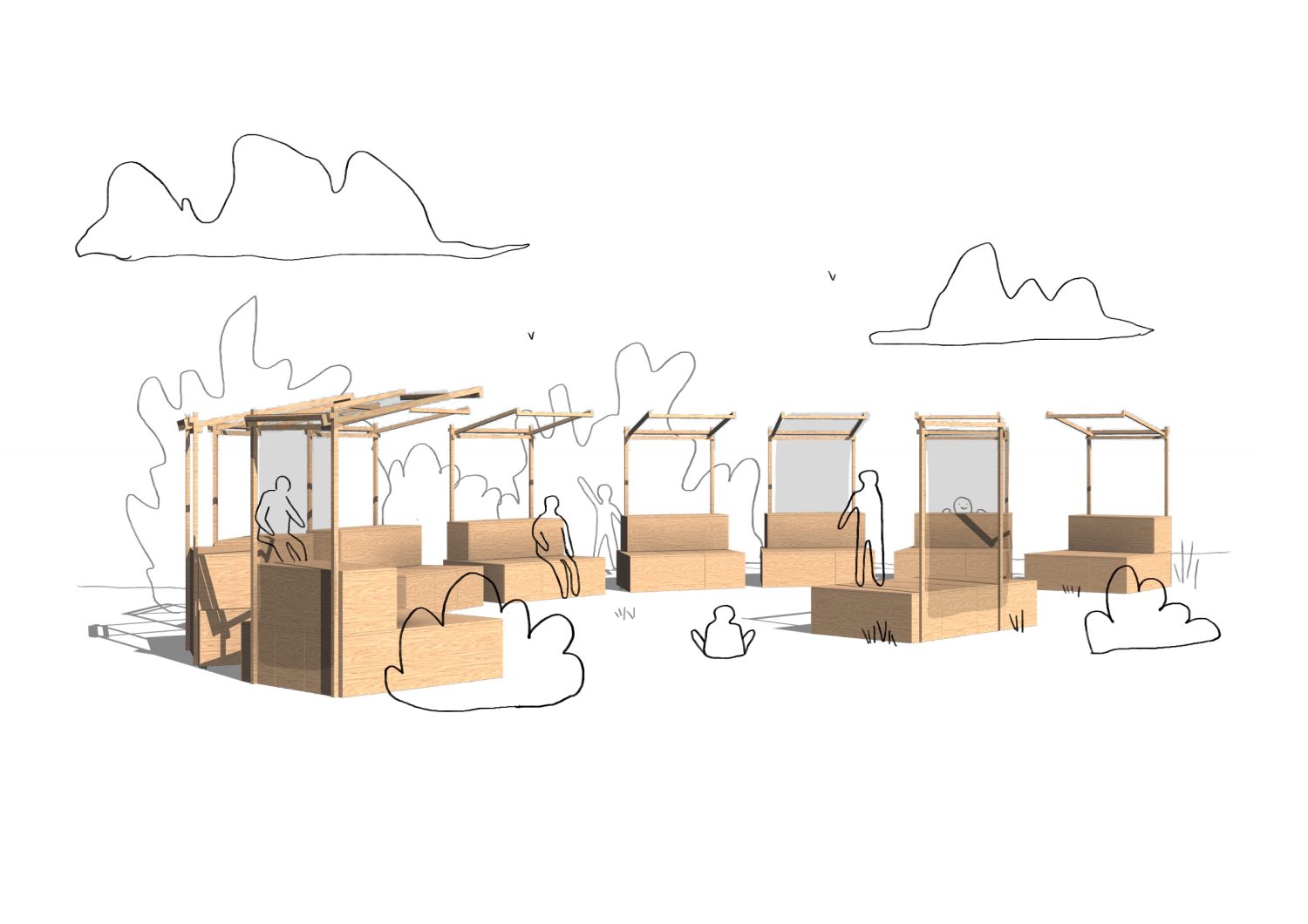
It’s time to move beyond Churchill’s old adage, quoted in the introduction to every student paper. Democracy – and we still have to define it – is a system that needs to be rethought before we can assume that it is “the least bad of all systems”. Democracy, if you like, is still in its infancy. Read that sentence again. Believe in it and embark on the great adventure of a true democratic revolt. Art, collective intelligence and joy are the keys that we, as young people, can mobilise to overcome the ageing representative democracy that does not represent us.
Maxime Ollivier is an activist for social and climate justice. Climate demonstrations, advocacy, civil disobedience with Extinction Rebellion, electoral campaigning with La Primaire Populaire for the presidential election in 2022: he tried out a number of modes of action before turning to art as a mobilisation tool with the Le Bruit Qui Court collective. He is the author of two books published by Actes Sud: Basculons dans un monde vi(v)able (2022) and Vivre avec l’éco-lucidité (2024).